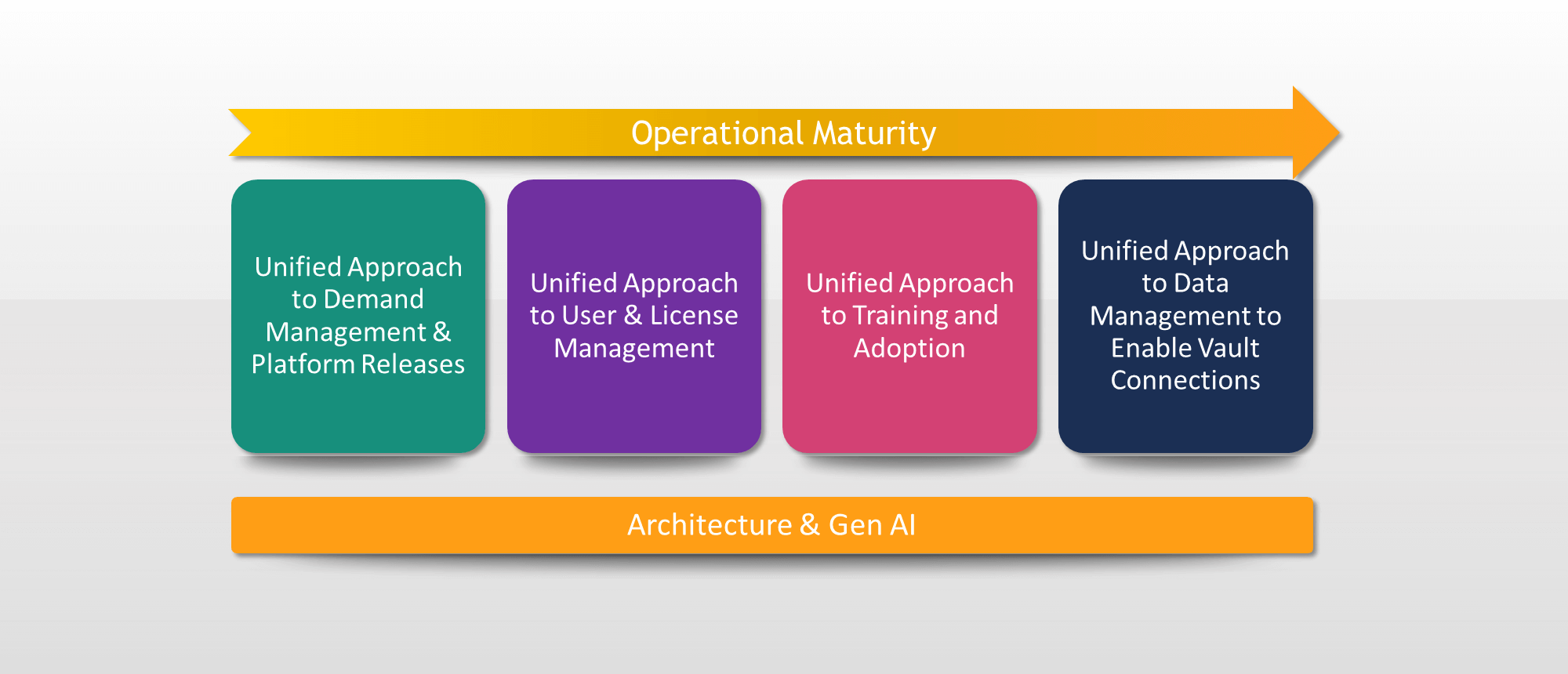Blog
Scaling Technical Operations Across Veeva Development Cloud
Nov 13, 2023 | Jared Katz
Nov 13, 2023 | Jared Katz
At Veeva’s 2023 R&D and Quality Summit, Raghu Nandan, global head of Veeva Development and Quality Cloud, described how Bristol Myers Squibb (BMS) evolved its technical operating model to accelerate innovation, improve business outcomes, and reduce IT burden in a multi-Vault environment.
Unifying technical operations
BMS’s Veeva footprint spans clinical, quality, regulatory, safety, and commercial operations, with more than 70% of employees using the Veeva Vault Platform.
For many years, BMS managed each Vault separately, which led to multiple impact assessments and redundant testing efforts. Recognizing the need for a more scalable approach, BMS’ leaders decided to unify and standardize how the company optimizes Vault capabilities across domains.
BMS now manages Vault Platform as an application, Nandan said. A centralized team addresses platform-level features, while specific domains such as clinical and regulatory focus on functional requirements and validation.
Focusing on four areas of operational maturity
BMS has taken a four-pronged strategy to unify technical operations across the Veeva Development Cloud, Nandan explained. It focuses on the following:
- Demand Management
Stakeholders from business, IT, and Veeva meet regularly to review and prioritize new features. A dedicated BMS Vault Platform team then works across Vault applications to accelerate value realization and deliver platform-level capabilities such as Vault Mobile. - User Management
BMS centralizes account creation at the platform level, reducing the administrative burden on application teams so that they can focus on priorities such as administering security profiles. This unified approach eliminates some of the user management headaches that can occur in a decentralized system, for example, when users create duplicate accounts in multiple Vaults. - User Adoption
Instead of monitoring the number of users who are logged in to the system, BMS gauges user adoption by tracking the completion of specific workflows. Using objective, workflow-based metrics helps drive productivity and business value. - Data Management
BMS is harmonizing targeted data structures across R&D, using Vault Connections to streamline cross-functional business processes. Unified data management also enhances the accuracy of generative AI tools such as ChatGPT, Nandan noted.

The power of partnership
Nandan credits the evolution of BMS’ technical operating model, and its successful implementation, to the company’s long-standing partnership with Veeva. The two companies work closely with BMS stakeholders throughout the organization, and have also collaborated on a number of Vault applications through Veeva’s early adopter program.
Nandan encouraged attendees to reach out to Veeva as early as possible in a project. “Don’t wait until you get your house in order,” he advised. Proactive communication helps ensure that Veeva’s consultants understand each customer’s existing business processes clearly so they can help maximize the value of each technology deployment.
Visit Veeva Connect to watch Nandan’s presentation and fireside chat on delivering optimization and innovation in a multi-Vault environment (starting at 39:00).